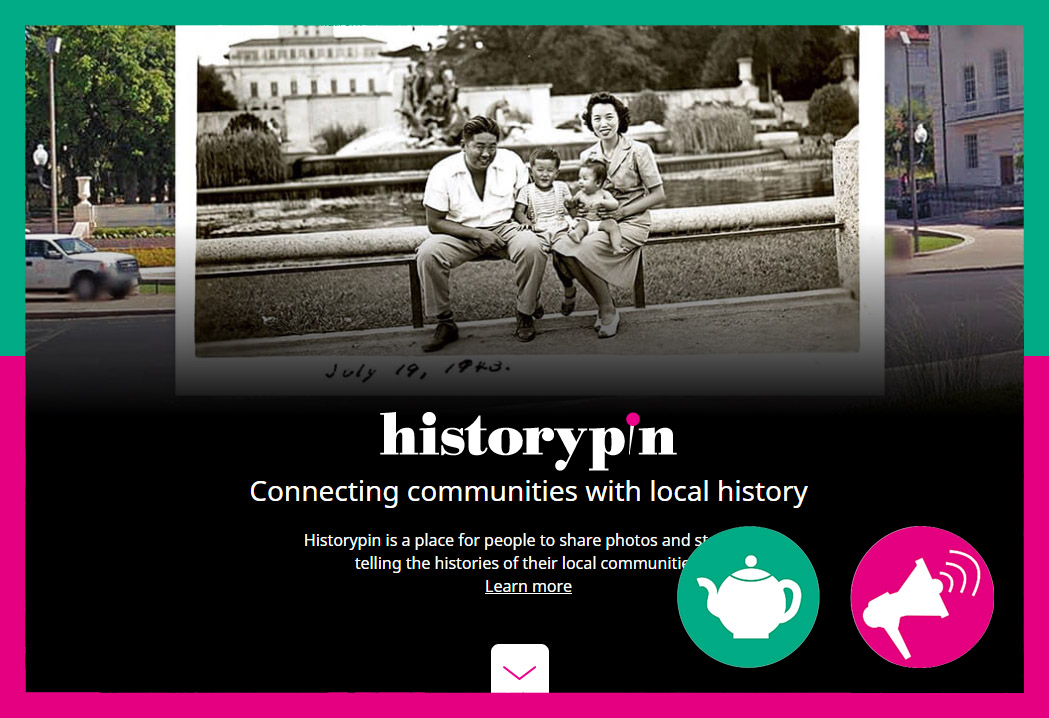About
HistoryPin has been developed to share historical photos and stories, to build local communities and to bring people together. Its strength is in the way it can be used by local agencies and organisations to support other community engagement activities.
The collaborative archiving of local heritage can be done using the app or through the free open access HistoryPin mapping platform – historypin.org – where stories can be collected and then shared with others.
HistoryPin projects in local areas can involve “working with the local community to gather and digitise photos, documents, sounds, moving images, stories and oral histories relating to the history of the local area, and sharing this content online for the world to see.” (2)
Project details
The project could be run in a local space such as a café or library, or with a school or older people’s group. As well as sharing stories about places, this tool can act as an entry point into wider conversations about a neighbourhood and people’s experience of it. It can also be used for local communities to communicate with local agencies and organisations.
“Communities all over the world use HistoryPin to run projects with local people, in which they gather and tell the history of their local area. To date, over 60,000 individuals and community groups and 2,500 libraries, archives, museums, schools, universities have run thousands of local projects, pinning in over 75 countries. These Community Heritage Activists have shared almost 400,000 materials and memories on HistoryPin, explored by 50,000 people each month.” (2)

